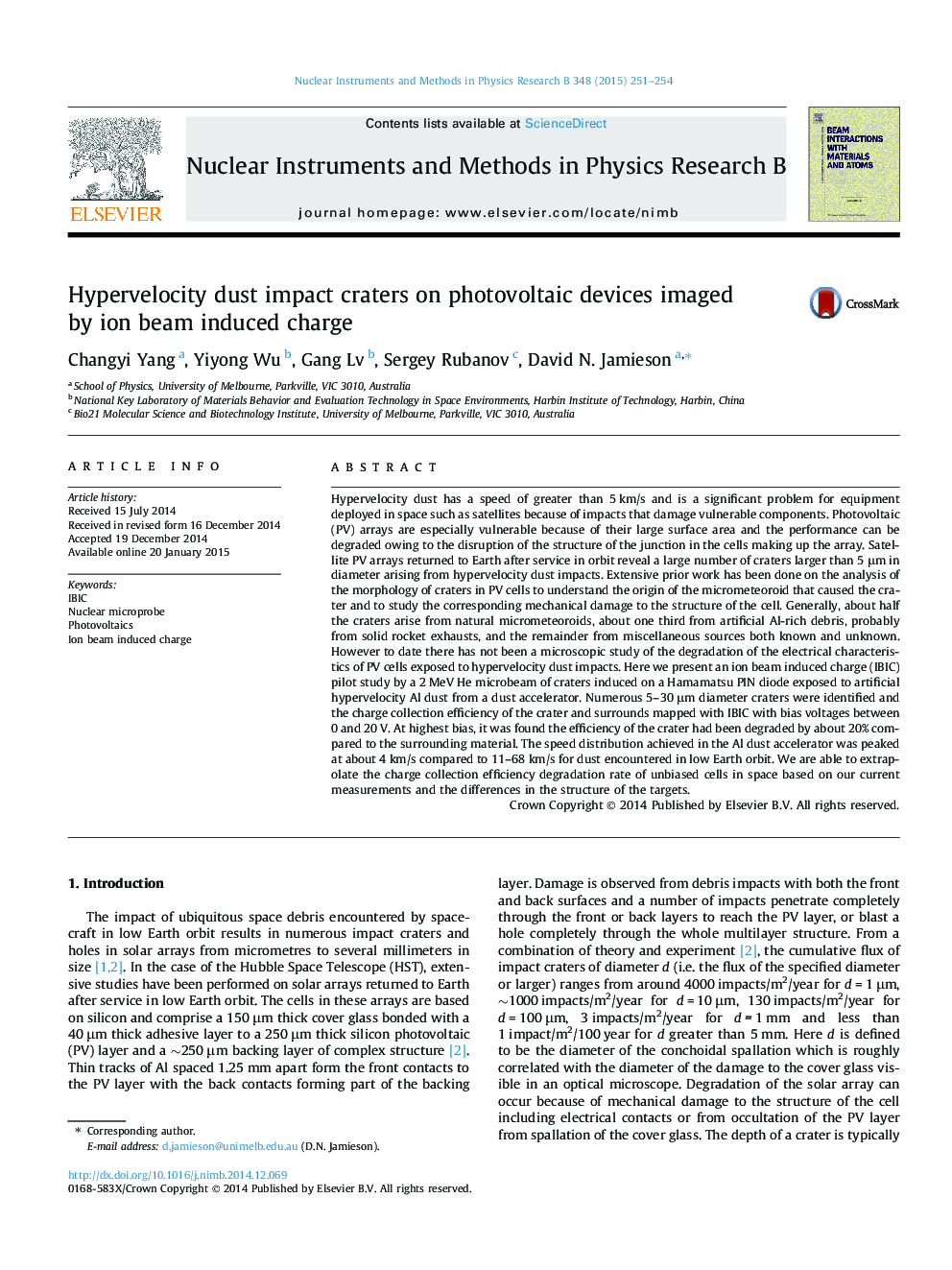| کد مقاله | کد نشریه | سال انتشار | مقاله انگلیسی | نسخه تمام متن |
|---|---|---|---|---|
| 1680385 | 1518671 | 2015 | 4 صفحه PDF | دانلود رایگان |
Hypervelocity dust has a speed of greater than 5 km/s and is a significant problem for equipment deployed in space such as satellites because of impacts that damage vulnerable components. Photovoltaic (PV) arrays are especially vulnerable because of their large surface area and the performance can be degraded owing to the disruption of the structure of the junction in the cells making up the array. Satellite PV arrays returned to Earth after service in orbit reveal a large number of craters larger than 5 μm in diameter arising from hypervelocity dust impacts. Extensive prior work has been done on the analysis of the morphology of craters in PV cells to understand the origin of the micrometeoroid that caused the crater and to study the corresponding mechanical damage to the structure of the cell. Generally, about half the craters arise from natural micrometeoroids, about one third from artificial Al-rich debris, probably from solid rocket exhausts, and the remainder from miscellaneous sources both known and unknown. However to date there has not been a microscopic study of the degradation of the electrical characteristics of PV cells exposed to hypervelocity dust impacts. Here we present an ion beam induced charge (IBIC) pilot study by a 2 MeV He microbeam of craters induced on a Hamamatsu PIN diode exposed to artificial hypervelocity Al dust from a dust accelerator. Numerous 5–30 μm diameter craters were identified and the charge collection efficiency of the crater and surrounds mapped with IBIC with bias voltages between 0 and 20 V. At highest bias, it was found the efficiency of the crater had been degraded by about 20% compared to the surrounding material. The speed distribution achieved in the Al dust accelerator was peaked at about 4 km/s compared to 11–68 km/s for dust encountered in low Earth orbit. We are able to extrapolate the charge collection efficiency degradation rate of unbiased cells in space based on our current measurements and the differences in the structure of the targets.
Journal: Nuclear Instruments and Methods in Physics Research Section B: Beam Interactions with Materials and Atoms - Volume 348, 1 April 2015, Pages 251–254
